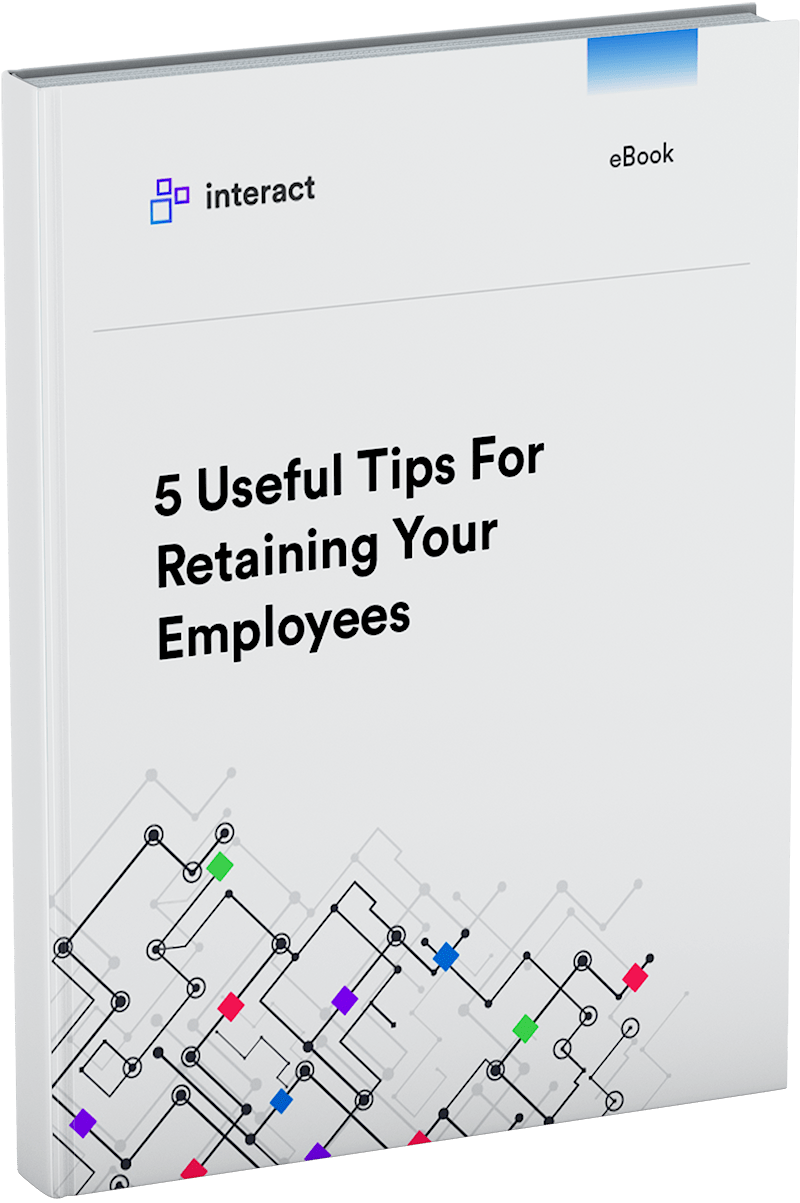How to humanize the workplace
The 21st century has brought about a lot of change in the workplace but when it comes to people management and organizational demand, are we still stuck in the last century?

Compare the modern workplace now to one from the turn of the 20th century. Lots of things have changed with design, equipment, and layout. But can we really say there has been much development in how we manage and take care of people?
7 useful tips for retaining your employees
Top down command and control-style management – a legacy of the Industrial Age – is still the order of the day in most workplaces. Key decisions are made by the management and control is generally top-heavy. It is a very traditional structure that has its justifications – that big decisions and complicated concepts are best left to a select group of people rather than the masses.
But two standards are moving into the business world – corporate social responsibility and the ‘human’ workplace. Both unsettle the traditional structures of authority being trussed up in senior management and welcome in a more people-centered approach. This is the Age of Participation.
The Age of Participation

With demands for transparency, sustainability, and more values-based economics, global consciousness is evolving. Where the Industrial Age focused on output, the Age of Participation is where organizations put value on the employee experience.
The Age of Participation, and its sister ideology, conscious capitalism, is where the thoughts, feelings and needs of the employee are taken into account, alongside the fiscal requirements of the company. Capitalism is therefore lifted from the 1980s ‘Greed is good’ mindset to a more noble, opportune movement which has the potential to do more good than bad (see Google’s Do the Right Thing/Don’t be Evil motto).
7 useful tips for retaining your employees
In the Conscious Capitalist Credo, it states, “We believe that business is good because it creates value, it is ethical because it is based on voluntary exchange, it is noble because it can elevate our existence and it is heroic because it lifts people out of poverty and creates prosperity. Free enterprise capitalism is the most powerful system for social cooperation and human progress ever conceived. It is one of the most compelling ideas we humans have ever had. But we can aspire to even more.”
Whether capitalism is a cause for good or bad is academic here. What many organizations are doing is trying to move away from the base reputation of corporations to show a sunnier, kinder, philanthropic side. The positive impact it has on the company itself is very enticing too. Doing good wins you loyal customers and employees.
Companies that lead in the Participation Age are the ones who look after four main factors – the emotional, experiential, social and financial. They provide the right support when needed, allow the employee the chance to feel appreciated, valued and motivated, have charitable aims and offer competitive salaries. The spinning of all these plates not only helps employees and people outside of the company, but also works in the interests of the company itself.
When companies adopt these behaviors, employees are more likely to work better as well: they identify with their organization much more and staff retention has been shown to improve. Businesses benefit from a better brand recognition, a positive reputation and attract more talent. Corporate social responsibility and creating a ‘human workplace’ has too many benefits to ignore.
The Participation Age company

Over the past decade, there has been more of a focus put on employee wellbeing and the impact on the outside world.
Companies like Zappos, Google, and Xerox – the so-called ‘Firms of Endearment’ – have all lead in this participation age, making the business model the hallmark of a modern organization. This idea of implementing corporate social responsibility into the business model has transformed the workplace.
Some companies have even taken their CSR and turned it into their primary business strategy. Footwear brand Toms, for example, and their ‘One for One’ campaign, where they donate a pair of shoes to children in need with every sale. Plenty more roll out community involvement programs which enable staff members to take sabbaticals and participate in community service.
7 useful tips for retaining your employees
How much further can this reworking of the standard conventions of business go? Traditional structures may see a complete shakeup in people-centered and values-based enterprises to the point where they could do away with all the notions we have of business. The hierarchy, the top-down management, the prescribed working hours. An organization could exist with no departments, no promotions, no HR and no written policies. A company that has profit-sharing for everyone and unlimited holidays.
This apparent disorder could actually be the future of how a business operates. The reworking could spell a transcendental shift from old ways of working to a new, more productive, happier way. Could it be that a workplace without all the usual restrictions works better?
It’s not a pie in the sky idea. There are companies out there who are operating on these new ways of working now. Managers are being replaced by leaders, employees are morphing into stakeholders and workplaces are no longer work pens, but places for collaboration and participation.
These businesses are demonstrating, through their productivity levels, profit sheets and low absenteeism levels that this model works. But how far a business goes with this type of approach will differ. In the meantime, there are very pedestrian, simple ways to create a human workplace with something as simple as intranet software.
How an intranet can build a ‘human’ workplace

Our clients have used their intranets to help them humanize their workplace in a number of ways, which seems unlikely given that an intranet is a piece of software. However, an intranet relies on the people within its closed network to run it, contribute to it and use it day-to-day. Given its universality across a business and its role as a unilateral communication tool, it makes sense that it should be pivotal in showcasing the people within it.
7 useful tips for retaining your employees
We’ve found many features within Interact software that help humanize the workplace. From providing a platform to speak to promoting a more human, relatable side to senior management, these are three easy ways you can help people connect, feel more valued and heard within their job role.
Blogging
Enabling your workforce to share their thoughts, ideas and opinions on their intranet have multiple benefits. Not only does it give your employees a platform within the organization and empower them to inject their personalities into the company, it also encourages you to create and publish quality content which will add value to peers. Intranet blogs also provide the reader with the ability to like and comment, which fosters discussion and enables knowledge sharing. Whether it’s about a new lunch place near work or a news article pertinent to the industry, these little conversation points bring people together, spark communication and allow every department to access the same information wherever their location.

Foreign exchange company, Travelex, have implemented blogging on their intranet with great success. Around eleven new blogs a day are posted on to The Lounge, the company’s intranet, and the honesty, humanity and spirit in each one have had a huge impact on the organization and its people. According to Tricia Scott, Global Intranet Manager at Travelex:
Everyone, from senior executives through to bureau workers, has a chance to get support and share their stories with a wider audience. Even our CEO contributes regular vlogs and comments on staff posts, engaging with all our users.
We have staff writing about things that go way beyond their day jobs. People are supporting each other through illnesses, divorces, and other challenges – and these are people from all over the world who may never have met each other face-to-face. They’re also sharing positive stories and experiences, which is helping us to embed a common culture.”
Blogs like this provide a human-ness to business, allowing people from every department and level to share the stories that may otherwise be kept hidden.
Employee recognition

Recognizing the value of employees is one of the most powerful staff engagement practices a company can do. Employee recognition reinforces the actions and behaviors you want to see throughout the organization, and bolsters the employee’s self-worth and esteem.
And while you can spend money on this, it’s not entirely necessary. Studies show that a thank you email or a verbal championing can go as far to boost morale as a gift or bonus does.
7 useful tips for retaining your employees
But to nurture a people-centered culture, this championing shouldn’t just come from the top. Employee recognition should be made available across the board so that workers can be praised by peers as well as employers.
The Rewards system from Interact enables workers to recognize other colleagues not only to reward them for their work, but to also champion them to the rest of the organization for good work or performance.
The feature allows users to award points to people within the organization. These can be accumulated over time and redeemed in a way that suits the organization – from trading them in for gifts to identifying an employee of the year.
MidPen Housing, one of the leading non-profit developers, owners, and managers of high-quality, affordable housing in the US, implemented this feature into their intranet, Lighthouse, with great success.
Each employee is handed twenty virtual keys each month to give out to their peers. These acknowledgments include one of their company values hashtagged in, to highlight the value that the recipient adds to the company. The keys are then exchanged for gift vouchers.
Video broadcasting
To add another medium to the intranet, video broadcasting is a great way of humanizing senior management and connecting to staff. In large companies, the C-suite can have almost mythical status, and their relationship with the business can get lost.
Videos from CEOs and managing directors is an excellent form of leadership communication. Filming a personal message or a blog is a really powerful way for your employees to get to know senior level better, without meeting them personally. Video can convey much more than an email or other written communication, and it can also pack in much more content – vital if you’re delivering important news with a lot of detail. And while it works really well for ‘big’ news, it’s also great for casual communication.

